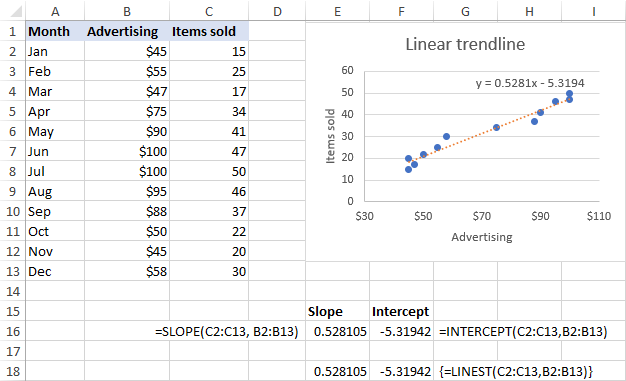

If only one variable is used, known_y's and known_x's can be ranges of any shape, as long as they have equal dimensions. The array known_x's can include one or more sets of variables. If the array known_y's is in a single row, then each row of known_x's is interpreted as a separate variable.Īn optional set of x-values that you may already know in the relationship y = mx + b

If the array known_y's is in a single column, then each column of known_x's is interpreted as a separate variable. The set of y-values you already know in the relationship y = mx + b The TREND function syntax has the following arguments:


The array function LINEST () calculates the linear trend that fits best the known data and then returns an array with statistics describing the trend line: number (required) is a number to take the natural logarithm of.The LN () function is the inverse of the EXP () function and returns the natural logarithm of a given number: number (required) is a power that e is raised to.The EXP () function returns the result of the constant e raised to the power of a number:


 0 kommentar(er)
0 kommentar(er)
